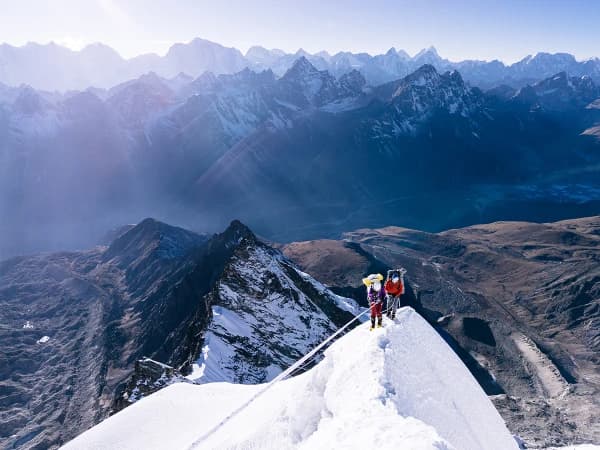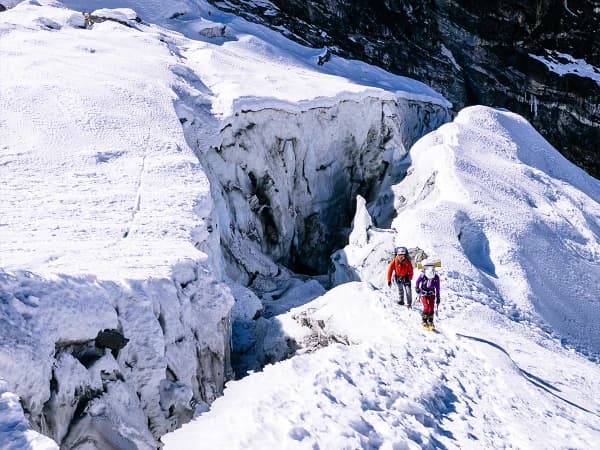Climbing Cholatse (6,446 m) is a true measure of an alpinist's ability, laden with challenges that make the summit a profound achievement.
- Key Challenges:
- Technical Difficulty: Classified as TD (Très Difficile / Very Difficult), the climb is relentless, with no easy sections. It requires a high level of competence in ice climbing, rope management, rotations and rest, and moving efficiently on steep, mixed terrain.
- Approach: Guided expeditions follow the standard South-West arête. The ascent is a sustained and committing climb involving approximately 20 pitches on steep snow and ice slopes.
The breakdown of the rotations via the South-West arête is as follows;
- Rotation 1: Ascend from Base Camp, navigate the lower glacier and icefall, and climb the headwall to establish or stock Camp 1 at approximately 5,750m. After caching gear, descend back to Base Camp for the night. This rotation provides the first crucial experience on the route's technical terrain.
- Rest Days: Following the first rotation, one ( or two) full rest day at Base Camp. This allows the body to recover and produce more red blood cells in response to the altitude stimulus.
- Rotation 2 (Summit Push): After adequate rest, move up the mountain with the intention of going to the top. The ascent plan involves sleeping one night at Camp 1, climbing to and sleeping one night at Camp 2, and then making the summit push from Camp 2.
- Exposure and Altitude: The route is incredibly exposed, with sheer drops on either side of the narrow ridges. Combined with the effects of high altitude, this creates a physically and mentally demanding environment.
- Objective Hazards: Like any major Himalayan peak, objective dangers such as serac fall, crevasses on the glacial approach, and the potential for sudden weather changes are prevelant.













